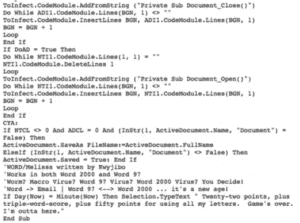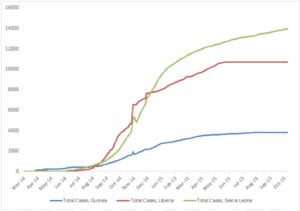During recent months we’ve witnessed an unexpected and distressing pandemic of a coronavirus disease. What I find especially distressing about it is how the worldwide adversity was caused by just a tiny thing – namely, a virus called SARS-CoV-2.
However, biological viruses have always been a potent threat to humanity as multiple historic pandemics have proved. No wonder viruses became an ideal weapon model in a totally different world – a world of programming. The first computer viruses were created as early as in the 1970s. Starting as pranks, they evolved to become a major threat to computer networks’ stability worldwide. And the more I think of viruses, both biological and digital, the more amazed I am by their similarities.
We don’t know what kind of challenges viruses of both types will cause in the future. But understanding how they infect, the symptoms they induce, how they spread, and the damage they can cause can help us fight both.
What’s common about computer and biological viruses?
Let’s start with the basics: what does a virus look like?
| Biological virus | Computer virus |
 |
 |
| This is an electron microscope image of SARS-CoV-2 particles – the pandemic-causing coronavirus.
Source: NIAID-RML. |
This is a code snippet of a Melissa - a notorious email-spreading computer virus of 1999.
Source: Gizmodo. |
These might look vastly different, but essentially they’re the same: a string of code. In the coronavirus, it’s the RNA genome in a shell, while in Melissa, it’s computer code. In both cases, the code is an “instruction” for the virus to follow.
What are the other similarities?
| Biological virus | Computer virus | |
| Parasitism | Replicates only inside the cells of a living organism using their resources. | Replicates by copying itself into other computer programs. |
| Invisible phase | Replicates inside an organism for a while without any symptoms; known as the incubation period. | Can be programmed to cause harm only after a certain event such as the launch of an app. |
| Mutation | Can produce copies with mutations that may become resistant to antibodies and drugs. | Can change the code in its copies to avoid detection by antivirus software. |
| Self-defense | Can attack and or compromise the immune system to protect themselves. | Can block antivirus software – such as GandCrab. |
Let’s not forget that both types of viruses represent just a single type of threat in their respective worlds. Along with biological viruses, there are bacteria, fungi, and other germs. However, in our daily life, we often say we “caught a virus” whenever we feel unwell.
Similarly, computer viruses are just one kind of malware - malicious computer programs. Still, we usually call all the harmful programs by the common word “viruses”. In fact, classic viruses are not that widespread. Many infamous cyber outbreaks were caused by computer worms, close relatives of viruses that are more infectious and independent. We’ll talk more about worms, too.
How are virus outbreaks similar?
There have been multiple outbreaks of viral diseases and computer malware in history, with some cases causing terrible damage. Biological virus epidemics are, of course, more severe in their impact. Smallpox, Spanish flu, AIDS, Ebola, and COVID-19 are just a few virus diseases that have shaken the world.
While computer viruses aren’t lethal, nor do they cause devastating health consequences, they can still have a dangerous global impact. For example, in 2010, Stuxnet worm managed to cause substantial damage to the nuclear program of Iran. In 2008, Conficker worm infected, among others, the French Navy computer network forcing their aircraft to be grounded. MyDoom worm caused more than $38 billion in damage – it is comparable to the $40 billion global economic loss caused by the SARS coronavirus outbreak in 2002-2004.
Looking at the times biological viruses and computer malware have spread it’s possible to see some similarities. Both kinds of viruses spread through some kind of contact, which leads to infecting great numbers of victims:
| Biological virus propagation | Computer virus propagation |
 |
 |
| These are Ebola cases during the disease outbreak in 2014-2015 in Guinea, Liberia, and Sierra Leone.
Source: Berkeley Science Review. |
These are cases of Code Red virus infection (by computers’ IP addresses) during its first outbreak in 2001.
Source: Computer Virus Propagation Models. |
In the examples above, Code Red virus managed to infect over 350,000 computers in less than 24 hours, while the Ebola virus affected over 25,000 people in more than a year. Though infection rates are dissimilar, the general pattern is similar: the infection starts from single points and quickly becomes massive; you can see the exponential growth on both graphs above.
The crucial factor is that it is possible to stop the virus at the very beginning, drastically reducing the resulting damage. This leads us to a few important conclusions.
What do virus outbreaks teach us?
I believe there are three principles we can (and should) follow each time we are at risk of epidemics, be they biological or digital. When are we at such risk? Basically, all the time.
1. Prevention is key
This can’t be stressed enough. Vaccination saves lives. Proper hygiene habits are essential. Investments in the immune system through a healthy diet, sleep, and exercise are important as well. These are ways to both avoid infection and to recover quickly should it happen.
Similarly, we need to protect our devices with security software and keep it updated. At the same time, we all should practice safe behavior online: avoid clicking on suspicious links, using weak passwords, running shady apps, and so on.
In both cases, we’re not just protecting our bodies or computers – this way we can stop the outbreak and prevent the infection curve from going up. We are also helping to protect other people.
2. Responsible behavior is a must
If we catch a virus, from the common cold to something more serious, we should act responsibly. Staying at home instead of rushing to the office, getting professional help instead of self-medicating, covering up when coughing or sneezing – these are basic rules for everyone who’s sick.
If we catch a virus, from the common cold to something more serious, we should act responsibly. Staying at home instead of rushing to the office, getting professional help instead of self-medicating, covering up when coughing or sneezing – these are basic rules for everyone who’s sick.
Containing a virus on your machine has similar protocols. You must isolate to prevent virus spread. If a computer has “fallen ill” or just shows symptoms, it also needs proper diagnostics and treatment. If there are any signs of a virus, we need to scan the device with a reliable antivirus. It’s important not to connect the computer to any networks or other devices until the malware is deleted. And if the case seems complicated, it’s better to contact an expert.
Eventually, the behavior of infected ones strongly influences how the virus outbreak goes.
3. Panic is our enemy
Being careful and responsible is good; overreacting and panicking is not.
Whenever a disease spreads, we need to educate ourselves and know what’s true about it and what’s not. It is important to be extra careful with information we receive and share. While official sources such as the Center for Disease Control’s or World Health Organization’s website are trustworthy and reliable, apocalyptic gossips on social media are not and bring only harm.
Similarly, there’s no need to install 12 different antivirus applications or disconnect from the internet forever. Instead, it makes sense to choose one reliable security program and only follow advice from trusted specialists.
What should we remember about viruses?
While biological and computer viruses have similarities, there are, of course, significant differences in how they behave and how they can be tackled.
It’s important to remember that humans come with a built-in, self-enhancing “antivirus”, most devices don’t. Our immune system is a remarkably efficient tool that beats most germs attacking us all the time. While we should help it by practicing healthy habits, it is already a strong and evolving mechanism. As for our devices, we need to arm them with their own immune system. People should thoroughly research antivirus software and wisely choose a reputable solution that best fits their needs. Once up and running, they should also stay on top of critical updates to ensure their software continues to run smoothly and maintain efficacy against the latest viruses. And lastly, just like biological viruses, people should understand and follow recommended practices for getting viruses altogether.
What is universally true is that relevant prevention, care, and treatment are crucial in all cases. Why don’t we invest a little effort into it today?







